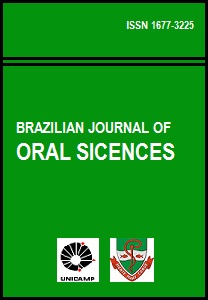Abstract
Aim: To investigate the prevalence of crown shape in maxillary central incisors of individuals with natural normal occlusion. Methods: The sample consisted of 51 Caucasian individuals with natural normal occlusion, no history of previous orthodontic treatment, and at least four of Andrews’ six keys to normal occlusion. The images of the maxillary incisors generated from model scans were evaluated by 12 orthodontists. The Kappa test was applied to verify inter-examiner agreement with regard to classification of the central incisor shape. Results: The results of the Kappa test showed significant agreement for tooth shape. The following prevalences were observed: ovoid (47.06%), square (31.37%) and triangular (21.57%). Conclusions: The choice and use of one of these three shapes when selecting teeth for prosthetic rehabilitation (total and partial dentures) can contribute significantly to obtaining an improved facial harmony and balance. Ovoid-shaped teeth should be “stocked” in greater quantities than other tooth shapes.The Brazilian Journal of Oral Sciences uses the Creative Commons license (CC), thus preserving the integrity of the articles in an open access environment.
Downloads
Download data is not yet available.

